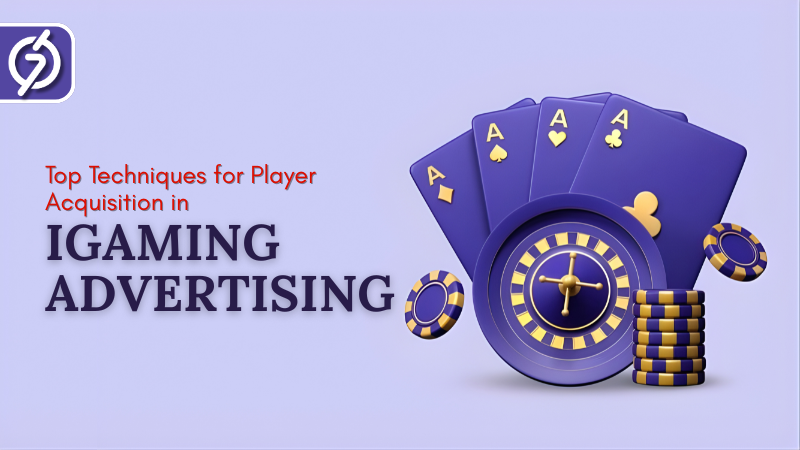Digital advertisers in the iGaming space are grappling with a paradox. The industry is booming, yet many campaigns struggle to convert the traffic they attract. According to recent market data, global iGaming ad spending crossed 10 billion dollars in 2024, with over 60 percent driven by performance-based campaigns. Yet, conversion rates across iGaming ads have dropped by an average of 25 percent over the past two years.
That slump has advertisers asking: what is going wrong in an environment where interest and reach are both sky-high? It’s not a lack of exposure. The challenge lies deeper — in targeting precision, campaign structure, and creative strategy. Understanding and fixing these issues is key to moving from impressions to deposits.
In this guide, we’ll explore seven effective ways to fix low conversion rates in iGaming advertising. Whether running online iGaming promotions or testing new formats of ads for iGaming, each approach below aligns with practical optimization tactics that actually work — tested and refined by advertisers within this rapidly evolving niche.
Let’s unpack what’s really holding back your campaigns and how a refined iGaming advertising approach for the new season can make all the difference.
1. Understand Player Motivation, Not Just Demographics
In iGaming advertising, many campaigns fail because they segment audiences solely based on age, gender, or geography. While these data points are useful, they reveal very little about the player’s mindset. What triggers interest in your ad? Is it competition, fun, risk, or reward?
Modern iGaming ads must align psychological triggers with intent categories. For example, reward-driven players might respond better to cashback banners, while socially competitive audiences engage more with leaderboard-based formats. Behavioral data from ad platforms and CRMs provides actionable insights to shift your creative focus from who your users are to why they play.
This balance transforms engagement quality. When ads mirror user intent instead of generic incentives, conversions naturally rise.
2. Simplify the User Journey to Reduce Funnel Friction
A common mistake in online iGaming promotion is sending clicks to overly complex landing funnels. Sometimes, an ad redirects through multiple pages before a user can even see the registration form. Every extra step means lost trust.
To improve conversion rates, apply the “one motion principle.” Eliminate any stage that doesn’t push users closer to action. Ads for iGaming work best when the landing experience feels like a continuation of the creative message, not a separate environment. That means maintaining visual consistency, copy tone, and call-to-action language.
Advertisers using direct-click landing pages have seen conversions improve by an average of 18 percent. The takeaway: seamless flow converts more than clever slogans.
3. Optimize Creative Formats for Emotional Resonance
The iGaming audience responds not to logic, but to emotion. Successful iGaming PPC campaigns tap into excitement and anticipation — feelings central to gaming itself. Yet, many static creative sets fail to evoke these emotions due to repetitive visuals and flat messaging.
Experimentation solves that. Incorporate cinematic motion snippets, countdown triggers, or localized visuals reflecting cultural familiarity. Even minor creative adjustments such as color psychology (using energetic shades like red or electric blue) can raise click-throughs.
Studies in 2025 show that emotionally attentive visual storytelling can double average watch time on mobile ad content. If your campaigns feel alive, users will act with equal energy.
4. Improve Ad Copy with Data-Informed Precision
Most advertisers treat copywriting as decoration, when in truth it’s your conversion engine. Highly converting iGaming advertisements use data to personalize tone and timing. A player clicking on a sports betting banner moments before a big match needs a different message than one exploring online casino games at midnight.
Use AI-driven insights from your analytics stack to adjust dynamic headlines and CTAs. A/B testing even four variations per ad batch can cut bounce rates by half. Avoid generic taglines like “Join Now” — instead, tie offers directly to user context, such as “Score Before The Match Kicks Off.”
Smart data application in messaging turns assumptions into actionable persuasion.
5. Align Bidding Strategy with Real-Time Demand
In iGaming PPC, one overlooked issue is mismatched bidding. Advertisers often maintain static cost-per-click bids, ignoring market fluctuations. During seasonal peaks like sports tournaments or major casino events, competition surges — and so do bid prices.
Instead of reactive budgeting, adopt adaptive bidding models that track conversion efficiency per segment. Automated bidding solutions in ad networks can balance visibility and cost through machine learning. When aligned with audience value, this strategy ensures that the highest-quality players, not just the cheapest clicks, reach your site.
Optimization isn’t just about getting cheaper traffic; it’s about driving meaningful traffic that deposits.
6. Use Retargeting Intelligently to Reignite Interest
Around 80 percent of users who click on iGaming ads don’t convert on their first visit. This makes retargeting essential — but only when done with discipline. Bombarding users with repetitive banners kills curiosity and leads to ad fatigue.
Effective iGaming advertisers stagger frequency caps, refresh creative, and retarget based on engagement behaviors. For instance, if a player browsed but didn’t complete registration, show an incentive-focused variant. If they played free demos, highlight premium features instead.
Retargeting also extends brand familiarity. After multiple exposures, users perceive the brand as more trustworthy — increasing the likelihood of sign-ups or first deposits.
When managed with audience respect, retargeting can lift final conversion rates by up to 30 percent.
7. Analyze Post-Conversion Behavior to Strengthen ROI
Improvement doesn’t end after the registration form is filled. True insight lies in tracking post-conversion flow — how long users stay active, frequency of deposits, or churn rates. This behavioral study helps optimize future acquisition strategies.
By connecting ad data to CRM insights, advertisers can identify which channels bring loyal players versus short-term ones. For example, social-traffic users might convert quickly but churn faster, while search-driven users yield lower CPA and higher lifetime value.
Such comparative insight allows reallocating budget to sustainable sources instead of vanity metrics. The result? Conversion improvement rooted in data, not speculation.
The Hidden Challenge in iGaming Advertising
The most overlooked barrier isn’t technology or competition — it’s adaptation. Trends evolve monthly, regulations change, and audience habits shift. Yet, many advertisers recycle outdated playbooks.
Adopting up-to-date solutions, from privacy-friendly tracking to flexible creatives, becomes crucial. Partnering with ad networks focusing on vertical performance, ad networks, helps advertisers fine-tune this process using specialized audience data. Their resources on the iGaming advertising network show how the niche can be approached with precision targeting and cost efficiency.
Sometimes, success isn’t just about bigger budgets but smarter distribution.
Fixing Conversions Is Easier Than It Seems
So where should advertisers begin when trying to fix low conversion rates? Start small. Tweak creative direction, simplify funnels, and study micro-behavior shifts in your audience segments.
Each adjustment accumulates results over time. And once clarity appears in small wins — higher CTRs, better deposit ratios, improved retention — the bigger picture sharpens. Campaign success becomes measurable and predictable.
When advertisers integrate emotional cues, audience insight, and advanced bidding simultaneously, conversion rates improve faster than expected. This synergy defines the most resilient brands in the iGaming industry today.
A Smarter Path Forward
By combining these seven fixes, iGaming advertisers move beyond the guesswork that commonly traps campaigns. Every improvement connects back to one principle — think like your audience, not just about them.
Moving forward, the aim should be to blend creativity with measurable logic. When campaigns serve genuine entertainment value and respect user intent, conversions follow naturally. And for those ready to scale further, it’s time to start your iGaming advertising journey with zero setup hassle on platforms designed for this unique market.
You’ll find it’s less about chasing clicks and more about nurturing consistent results — the kind built through insight, not impulse.



